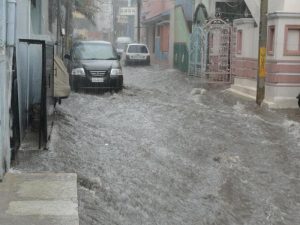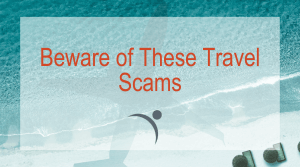15 Ways To Avoid Buying A Flood Damaged Car In 2019
So. You have applied for an auto loan, you have been approved for your auto loan, and now you are ready to buy a car. Before you hit the dealerships, continue reading.
According to Fortune.com, Hurricane Irma and Hurricane Harvey damaged a combined total of 1 million cars. This is double the amount of vehicles damaged by Katrina. A previous report by CarFax estimated that half of the damaged cars from Hurricane Harvey will end up on the marketplace. As a consumer, this information in very important to you, as many of these damaged cars could end up for sale all over the country. Since most cars are run by computers these days, significant damage occurs when water gets as high as it did during Harvey and Irma. Worst of all, flood damage in cars can take time to surface.
Take Paul Adams for example. Adams, a resident of California, bought a used Cadillac for $14,000 in 2009, and had zero problems with the car at first. About a month after purchasing the car, the car’s windows would not close or open. He had to spend about $100 out of pocket to fix the issue. A few weeks later, the car’s lights started flickering, and the electrical system completely shut down. As a result, Adams had to pay $700 to fix these issues.
During one of the repairs, a mechanic noticed corrosion, which is a sign of water damage. He re-checked the vehicle’s registration and saw that his car was in New Orleans during Hurricane Katrina. Adams eventually put the car up for sale, clearly disclosing it had been in Hurricane Katrina. He only got $4,500 when his car finally sold.
sale, clearly disclosing it had been in Hurricane Katrina. He only got $4,500 when his car finally sold.
This post will provide you with the ways you can identify a storm-damaged car, so you can avoid the major headaches many other Americans face after buying one.
15 Ways To Avoid Buying A Flood Damaged Car
- First, and foremost, request a vehicle history report. The current title is not enough to guarantee that the vehicle was not in a flood, due to title washing. Always use a trusted database service that gathers information from state and local authorities, salvage yards, and insurance companies.
Resources such as the Department of Justice’s National Motor Vehicle Title Information System (NMVTIS) will provide you with accurate information about a vehicle’s title, odometer data, and damage history. You will have to pay $10 for the report, but this cost is minimal compared to the money you could spend trying to fix a storm-damaged car - Check for a musty odor. A musty odor is a huge indication of a flood damaged vehicle. On the other hand, a strong smell of cleaners and disinfectants could be a sign that someone has tried to cover up flood damage.
- Inspect for dirt and/or mud stains on the inside of the car.
- Check the car’s ashtrays, glove boxes, and other compartments to see if there are stains or leftover flood water residue.
- Check to see if the vehicle’s carpet or seat coverings seem newer than the vehicle. This could be a huge indication that they were replaced to cover up flood damage.
- Turn on all the vehicle’s power options including the windows, locks, wipers, and AC to make sure they work.
- Listen for a crunchy sound when you pull the seats forward or back. This noise could mean there’s sand or dirt that made its way into the car during the storm.
- Check for any rust or corrosion on the vehicle’s body.
- Take the car for a test drive and listen for any unusual transmission or engine sounds, or any erratic shifting and acceleration.
- Check to see if oil or transmission fluid appears milky, or has beads of water in it. This is a huge indication of water damage.
- Check for mineral deposits or discoloration of the seats, seat belts, or door panels.
- Look to see if there are droplets of water or any moisture on the inside of the instrument cluster. In addition, check for moisture inside the headlights and taillights.
- Examine the vehicle for misshapen door panels.
- Always have the vehicle you are interested in purchasing examined by a mechanic that YOU hire. Request the mechanic to check the mechanical and electrical components of the vehicle for water damage, as well as the systems that contain fluids.
- If you suspect a car dealer is knowingly selling storm-damaged or salvaged vehicles as a good-condition, used car, contact the local authorities, or the NICB at 800-835-6422.
Auto Financing Is Important
Buying a car is a major investment. Having a trustworthy auto lender is a top priority for any consumer. We believe owning a car should be affordable for everyone. That’s why we offer low auto loan rates, flexible terms, and monthly payments you can afford. Apply online for your auto loan today, or call a friendly Launch CU Loan Specialist at 321-456-5441.


